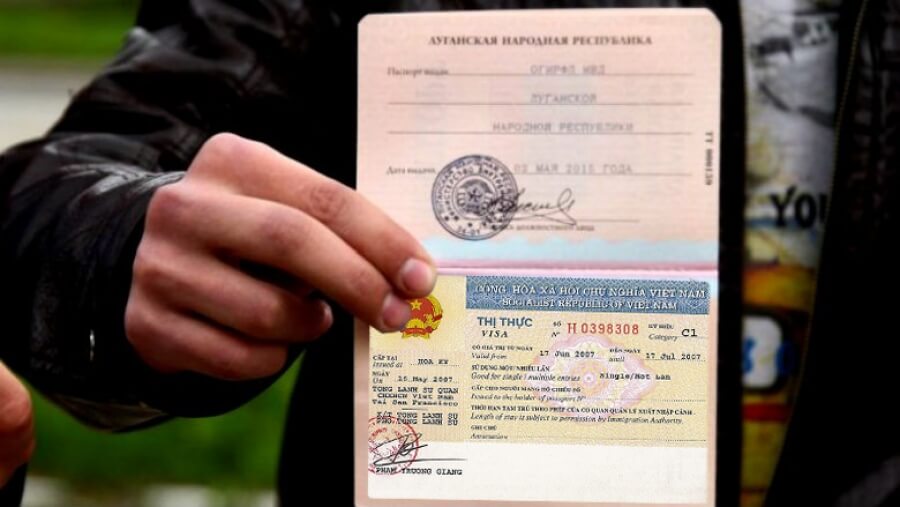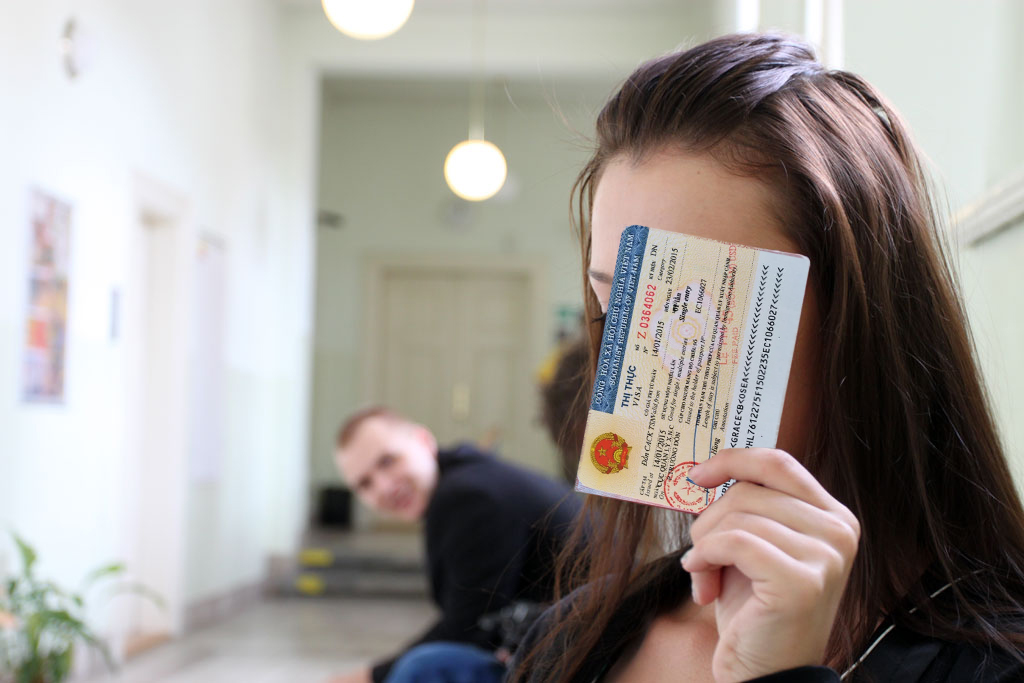Are you planning a trip to Vietnam in 2024? If so, understanding the visa requirements and application process is crucial to ensure a smooth and hassle-free entry into the country. Vietnam Visa on Arrival (VOA) is a popular option for many travelers due to its convenience and simplicity. In this article, VTJ will guide you through the process of applying for a Vietnam VOA in 2024, providing you with all the necessary information and step-by-step instructions to make your application process a breeze.
>>>Read more: Visa in Vietnam: Vietnam Visa Application & Requirements in 2024
>>>Read more: Vietnam Emergency Visa – Expedited & Urgent Vietnam Visa 2024
Vietnam Visa on Arrival (Vietnam Voa): Step-by-step guide
Vietnam Visa on Arrival (Vietnam Voa): Step-by-step guide
Before you apply
Before diving into the application process, it’s important to familiarize yourself with a few key details. Firstly, the Vietnam Visa on Arrival (VOA) is only applicable for air travelers arriving at certain international airports in Vietnam. Additionally, it’s crucial to check if your nationality is eligible for the VOA program. Some nationalities may require a pre-approved visa or need to apply for a visa through the Vietnamese embassy or consulate in their home country.
>>>Read more: How to Apply for Vietnam e-Visa 2024: Costs & Processing Time
Why choose Vietnam Visa on Arrival (Vietnam Voa)
The Vietnam VOA program offers several advantages that make it a popular choice among travelers. Firstly, it eliminates the need to visit an embassy or consulate, saving you time and effort. The application process is straightforward and can be completed online from the comfort of your own home. Additionally, the VOA program provides flexibility, allowing you to apply for different types of visas depending on your purpose of visit, such as tourist, business, or diplomatic visas.
>>>Read more: What documents do foreigners in Vietnam need in 2024?
List of applicable airports
The Vietnam VOA program is available at several international airports in Vietnam.
- Noi Bai International Airport – HAN
- Da Nang International Airport – DAD
- Tan Son Nhat International Airport – SGN
- Cam Ranh International Airport – CXR
- Phu Quoc International Airport – PQC
- Can Tho International Airport – VCA
- Cat Bi International Airport – HPH
Things to know
Before applying for a Vietnam VOA, there are a few important things to keep in mind. First, the VOA program has specific requirements regarding passport validity, so ensure that your passport meets the necessary criteria. Additionally, it’s important to have a clear understanding of the visa fees and payment methods accepted for the VOA application.
>>>Read more: Vietnam Business Visa 2024 [Updated]: Requirements & How to apply
Gather your documents
To apply for a Vietnam VOA, you will need to gather certain documents. These typically include:
- A valid passport with at least six months of validity remaining.
- A completed visa application form.
- A recent passport-size photo.
- Additional documents depending on your purpose of visit, such as an invitation letter for business visas or a hotel reservation for tourist visas.
Depending on your purpose of visit, additional documents may be required, such as an invitation letter for business visas or a hotel reservation for tourist visas. It’s important to have all the necessary documents ready before proceeding with the application.
>>>Read more: Teaching English in Vietnam: The Complete Guide & How to Get Started?
Apply for your Vietnam Visa on Arrival (Vietnam Voa)
Once you have gathered all the required documents, you can proceed with the application process. Applying for a Vietnam VOA involves filling out an online application form, making the necessary payment, and receiving an approval letter via email. This approval letter will allow you to board your flight to Vietnam and obtain your visa upon arrival at one of the designated international airports.
>>>Read more: How to obtain a criminal record certificate in Vietnam?
Information for getting a Vietnam Visa on Arrival (Vietnam Voa)
Information for getting a Vietnam Visa on Arrival (Vietnam Voa)
What is a visa on arrival?
A Visa on Arrival (VOA) is a type of visa that allows travelers to obtain their visa at the destination country’s airport or entry point rather than obtaining it through the country’s embassy or consulate in advance of their travel. It is a convenient way for visitors to secure their entry into a country, and it is often used by tourists and business travelers.
>>>Read more: Overstay Your Visa in Vietnam: What Should You Do?
Pros and cons of applying for a visa on arrival
Pros of applying for a visa on arrival
- Convenience: The VOA program allows you to apply for your visa online, saving you the hassle of visiting an embassy or consulate.
- Time-saving: The application process is typically quick and straightforward, allowing you to receive your approval letter within a few business days.
- Flexibility: The VOA program offers various visa types to accommodate different purposes of visit, such as tourism, business, or diplomatic activities.
- Cost-effective: The VOA program often has lower fees compared to applying for a visa through an embassy or consulate.
Cons of applying for a visa on arrival
- Limited entry points: The VOA is only applicable for air travelers arriving at designated international airports in Vietnam. If you plan to enter the country by land or sea, you will need to apply for a different type of visa.
- Potential queues: Depending on the time of your arrival, there may be queues at the visa-on-arrival counter, which could cause some delays.
Who is eligible for a Vietnam Visa on Arrival (Vietnam Voa)?
Eligibility for a visa on arrival in Vietnam extends to the following applicants:
- Tourists: Foreign tourists who are participating in a Vietnam tour organized by a registered Vietnam travel agency.
- Business travelers: Foreign citizens traveling to Vietnam for business or commercial purposes, such as attending meetings, conferences, or exploring business opportunities.
- Transit travelers: Individuals who have Vietnam as one of their destinations during their journey to another country.
- Urgent cases: Foreigners entering Vietnam in urgent situations, including incident handling, rescue operations, natural disaster prevention, epidemic prevention, or special requests from competent Vietnamese agencies.
>>>Read more: What is an OEC (Overseas Employment Certificate)?
Conditions / Applicable laws
To successfully obtain a Vietnam VOA, there are certain conditions and applicable laws to be aware of. These include having a valid passport with at least six months of validity remaining, providing accurate and truthful information during the application process, and complying with Vietnamese immigration laws and regulations during your stay in the country.
How to apply for a Vietnam Visa on Arrival (Vietnam Voa)
The application process for a Vietnam VOA involves the following steps:
- Fill out the online application form with accurate and complete information.
- Make the necessary payment for the visa processing fee.
- Receive an approval letter via email, which you will need to print and bring with you.
- Upon arrival at one of the designated international airports in Vietnam, proceed to the visa-on-arrival counter, present your approval letter, passport, and other required documents, and pay the stamping fee to obtain your visa.
>>>Read more: Which documents do I need to teach English in Vietnam legally?
Processing time and fee of Vietnam Visa on Arrival (Vietnam Voa)
Processing time
The processing time for obtaining an approval visa letter ranges from 7-10 working days.
Fee
When it comes to the cost of a Vietnam visa on arrival, there are two types of fees that need to be paid:
- Service fee: This fee is required to obtain the Visa approval letter. The amount varies depending on the visa type and processing time selected.
- Stamping fee: This fee is paid in cash at Vietnam International Airport to get the visa stamped. For a single entry visa, the stamping fee is USD 25, and for a multiple entry visa valid for up to 3 months, the stamping fee is USD 50.
>>>Read more: How to Apply for a Work Permit in Vietnam 2024: Requirements + Fees
Applying for a Vietnam VOA in 2024 is a convenient and efficient way to obtain your visa for travel to Vietnam. By following the simple steps outlined in this guide, you can save time and effort compared to traditional visa application methods.
FAQs
Can I fly to Vietnam without a visa?
Yes, if you’re from one of 25 specific countries or are visiting certain coastal economic zones, you can fly to Vietnam without a visa. APEC Business Travel Card (ABTC) holders can stay for up to 60 days without a visa as well.
What is the difference between VOA and Evisa Vietnam?
The main difference between Visa on Arrival (VOA) and Evisa Vietnam is the application process. VOA requires obtaining an approval letter beforehand and getting the visa stamped upon arrival, while Evisa allows for online application and pre-approval before travel.
How much is a visa on arrival in Vietnam?
The cost of Visa on Arrival in Vietnam includes a service fee (varies by visa type and processing time) and a stamping fee (USD 25 for single entry, USD 50 for multiple entry up to 3 months).
I enter Vietnam by air but want to exit Vietnam by landports. Is this visa acceptable?
Currently, Vietnam visa on arrival (VOA) can be used for entry at airports, land border crossings, and seaports. However, this depends on the specifics of your initial visa application. To be sure, it’s advisable to check the details for each specific case.
Can I get my visa photos when I arrive?
It is recommended to bring your visa photos with you when you arrive to ensure a smooth process. If you don’t have photos ready, it usually costs 5 USD to have them taken at the customs.
What is the official government website for visa on arrival?
The official government website for Visa on Arrival in Vietnam is not available. It is advisable to use reputable travel agencies or visa service providers to apply for a Visa on Arrival.







Good afternoon!
My name is Allan E. Ecleo and presently residing at Bacoor, Cavite, Philippines.
Majority of my exposures have been in Corporate Sales for more than twenty (20) years; before I shifted to the Technological University of the Philippines, Manila, as a Contractual Faculty for four (4) semesters.
In connection with these commitments that I had both in Corporate Sales and the Academe, may I know if these could qualify me for a Teaching Profession in Vietnam?
Thank you and hope to hear from you soon.
Best regards along with the Vietnam Teachinv Jobs Team and the whole family.
Sincerely,
Allan E. Ecleo
Hello Allan E. Ecleo,
Thank you for reaching out and expressing your interest in pursuing a teaching profession in Vietnam. While I can provide some general information, please note that specific requirements may vary depending on the institution and the type of teaching position you are seeking.
– Teaching at International Schools: If you intend to teach at an international school in Vietnam, the typical requirement is to have a Bachelor’s degree in Education or a related field, along with relevant teaching certifications. These schools often require teachers to be licensed educators in their home country.
– Teaching at Language Centers: If you plan to teach at language centers or English language schools, the requirements can be less stringent. Generally, you would need to have a Bachelor’s degree in any field, a TEFL (Teaching English as a Foreign Language) or TESOL (Teaching English to Speakers of Other Languages) certification, and proficiency in English. If you are not a native English speaker, some institutions may require proof of your English language proficiency through standardized tests like IELTS or TOEFL.
It’s advisable to research specific schools or language centers in Vietnam that interest you and reach out to them directly for detailed information on their hiring requirements and application process.
Best regards,
VTJ Team.